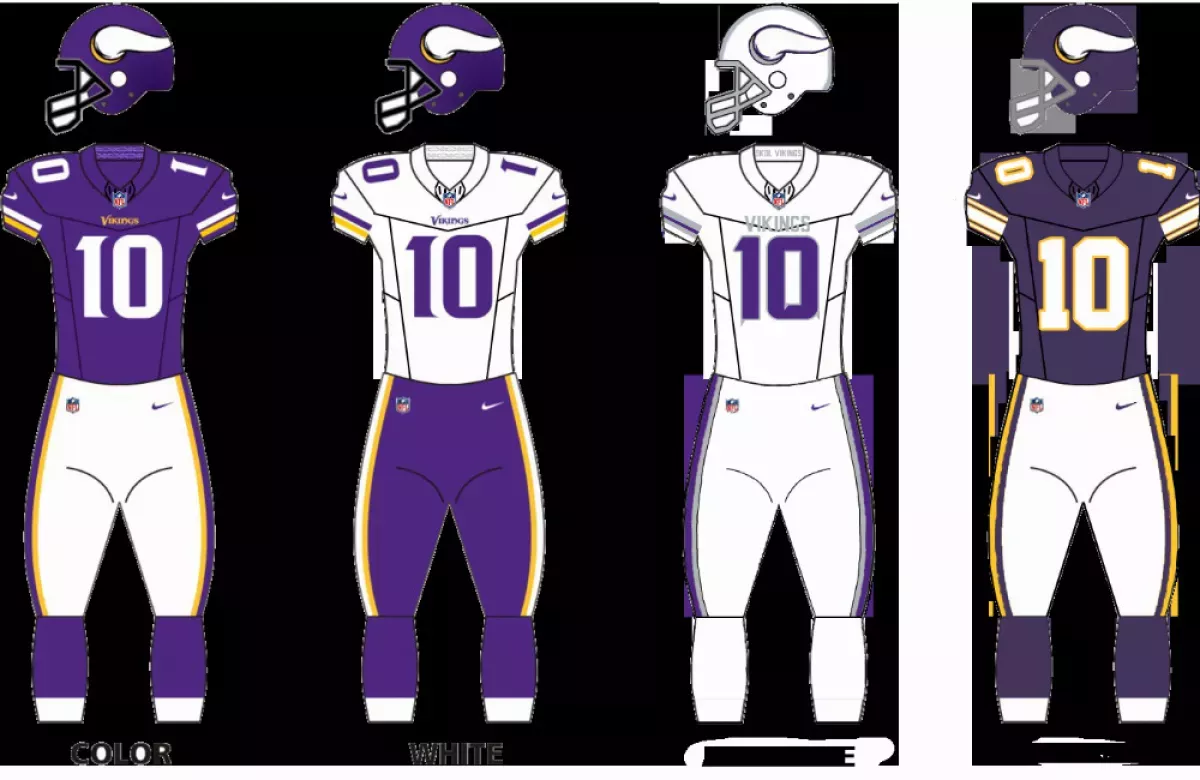The Minnesota Vikings are a professional American football team established in 1960 and based in Minneapolis. As a member of the NFC North division, they compete in the NFL. Their name reflects the Scandinavian heritage of Minnesota. The Vikings play their home games at U.S. Bank Stadium in downtown Minneapolis.
1962: Vikings wore purple pants
From 1962 to 1964, the Vikings wore purple pants with their white jerseys.
October 11, 1964: Vikings wore all-purple for a game for the first time
On October 11, 1964, the Vikings wore all-purple for a game for the first time due to a uniform mishap during a home game against the Detroit Lions.
1964: Vikings wore purple pants
From 1962 to 1964, the Vikings wore purple pants with their white jerseys.
1969: Alternate purple jersey introduced
From 1969 through 1973, the Vikings had an alternate purple jersey without stripes for warm-weather games.
1969: Design for white uniforms had changed
In 1969, the design for the white uniforms had changed to a completely different stripe pattern.
1970: Hub Meeds became team mascot
From 1970 to 1992, truck driver Hub Meeds dressed as a Viking and served as the team mascot.
1973: Alternate purple jersey
From 1969 through 1973, the Vikings had an alternate purple jersey without stripes for warm-weather games.
1978: Wore black armbands
The Vikings wore black armbands for the last four games in 1978 in memory of assistant coach Jack "Jocko" Nelson.
1980: Changing the color of the face mask
In 1980, the color of the face mask changed from gray to white.
1982: Krazy George Henderson employed as a cheerleader
From 1982 to 1985, Krazy George Henderson was employed as a cheerleader.
1984: Les Steckel became head coach
Les Steckel became the head coach in 1984.
1985: Krazy George Henderson employed as a cheerleader
From 1982 to 1985, Krazy George Henderson was employed as a cheerleader.
1985: Changing the color of the face mask
In 1985, the color of the face mask changed from white to purple.
January 7, 1986: Jerry Burns Named Head Coach
On January 7, 1986, Jerry Burns, the Vikings' offensive coordinator from 1968 to 1985, was named the fourth head coach in team history.
January 17, 1988: Vikings lose NFC Championship Game
On January 17, 1988, the Vikings lost the NFC Championship Game to the Washington Redskins at RFK Stadium after failing to score from the Redskins' 6-yard line with a minute left, ending their Super Bowl hopes.
October 12, 1989: Vikings Acquire Herschel Walker
On October 12, 1989, the Vikings acquired Herschel Walker from the Dallas Cowboys in a significant trade.
1989: Wore patch for 1969 NFL championship team
In 1989, they wore a "40 for 60" patch honoring the 1969 NFL championship team.
December 3, 1991: Jerry Burns Announces Retirement
On December 3, 1991, Jerry Burns announced his retirement as head coach of the Vikings, effective at the end of the 1991 season, after compiling a 52–43 record in six seasons.
1992: Hub Meeds retired as team mascot
From 1970 to 1992, truck driver Hub Meeds dressed as a Viking and served as the team mascot.
1994: Ragnar became team mascot
From 1994 to 2015, the team mascot was Ragnar (played by Joseph Juranitch).
1995: Vikings logos and uniforms remained the same since debut
From their debut in 1961 until 1995, the Vikings' logos and uniforms remained virtually unchanged.
1995: Vikadontis Rex took part in Celebrity Mascot Olympics
In 1995, "Vikadontis Rex", a purple foam dinosaur, took part in the Celebrity Mascot Olympics.
1996: Norseman logo added to sleeves
In 1996, the Norseman logo was added to the sleeves and the purple jersey stripes were toned down.
1999: Wore patches for assistant coach Chip Myers
In 1999 the Vikings wore patches for assistant coach Chip Myers who died in the offseason.
2000: Vikings lose NFC Championship Game to Giants
In 2000, the Vikings, despite an 11-5 record, were defeated 41-0 by the New York Giants in the NFC Championship Game, and Robert Smith retired after the season.
2000: Vikadontis Rex was retired
Vikadontis was retired starting with the 2000 season.
2001: Dennis Green's contract bought out
In 2001, after a disappointing 5-11 season, the Vikings bought out Dennis Green's contract and Mike Tice coached the final game of the season.
2002: Vikings join NFC North
In 2002, the Vikings became part of the newly formed NFC North due to league realignment.
2003: Vikings Miss Playoffs After Cardinals Touchdown
During the 2003 season, the Vikings missed the playoffs after the Arizona Cardinals completed a game-winning touchdown on 4th-and-28 with 0:00 left, their first time all season not leading their division.
2003: Jamal Lewis sets single-game rushing record
In Week 9, Adrian Peterson broke the NFL single-game rushing record set by Jamal Lewis in 2003 by rushing for 296 yards against the San Diego Chargers.
2004: Culpepper sets records; Vikings beat Packers in playoffs
In 2004, Daunte Culpepper achieved MVP-like statistics, and the Vikings defeated the Green Bay Packers in their first-ever playoff meeting, becoming the second team in NFL history to win a playoff game with a .500 regular-season record, before being defeated by the Philadelphia Eagles in the divisional round.
2004: Mike Tice leads the Vikings back to the playoffs
In 2004, Mike Tice led the Vikings back to the playoffs.
March 2, 2005: Randy Moss Traded to Oakland Raiders
On March 2, 2005, Vikings wide receiver Randy Moss was traded to the Oakland Raiders for Napoleon Harris and a first-round draft pick.
2005: Mike Tice Fired; Brad Childress Hired
After the 2005 season, Mike Tice was fired by owner Zygi Wilf and was replaced by Brad Childress as head coach.
2006: Slight revision of horn logo
In 2006, the Viking horn logo was slightly revised and the team returned to wearing black shoes.
2006: Team uniforms redesigned
In 2006, the team's uniforms were redesigned, marking the first significant change in the franchise's 46-year history.
2006: Vikings Finish 6-10, Draft Adrian Peterson
Minnesota finished the 2006 season with a 6-10 record, leading to the selection of Adrian Peterson in the NFL draft.
2006: Vikings have #1 run defense in the NFL
Since 2006, the Vikings have been known for their strong run defense, ranking #1 in the NFL in 2006.
December 17, 2007: Vikings wore all-purple intentionally
On December 17, 2007, in a Monday Night Football game against the Chicago Bears, the Vikings wore both purple jerseys and purple pants—the first time they wore all-purple intentionally.
2007: Viktor the Viking introduced
During the 2007 Vikings' season, Viktor the Viking was introduced as the team's official mascot.
2007: Vikings have #1 run defense in the NFL
Since 2006, the Vikings have been known for their strong run defense, ranking #1 in the NFL in 2007.
2007: Purple pants not regularly used since
The purple pants have not been regularly used since 2007.
2008: Longest Play in Vikings History
In Week 13 of the 2008 season, Gus Frerotte and Bernard Berrian set the record for the longest play in franchise history with a 99-yard touchdown pass against the Bears.
2008: Vikings have #1 run defense in the NFL
Since 2006, the Vikings have been known for their strong run defense, ranking #1 in the NFL in 2008.
January 4, 2009: Vikings Lose to Eagles in Wild-Card Round
On January 4, 2009, the Vikings hosted the Philadelphia Eagles for the wild-card round but were defeated 26-14.
August 18, 2009: Brett Favre Signs with Vikings
On August 18, 2009, Brett Favre, who had played for the Green Bay Packers, signed a two-year, $25 million deal with the Vikings.
2009: Vikings Clinch NFC North Championship
In the 2009 season, the Vikings clinched the NFC North championship for the first time after defeating the New York Giants and Adrian Peterson led the NFL with 1760 rushing yards, breaking the franchise record.
November 7, 2010: Vikings wore all-purple for home game
The Vikings wore all-purple for the November 7, 2010, home game against the Arizona Cardinals.
2010: "Purple and Gold" recorded by Prince
In 2010, "Purple and Gold" was recorded by Minneapolis native Prince to be used as a fight song for the Minnesota Vikings.
2010: Purple pants resurfaced twice
The purple pants resurfaced twice in 2010.
February 14, 2013: Vikings tweaked Norseman logo
On February 14, 2013, the Vikings tweaked their Norseman logo, updating the shading, altering the horn shape, thickening the mustache and face, and brightening the gold tones.
2014: Last winning season before 2020
In 2014 the Vikings had a winning season, after which they would not have another until 2020.
2015: Vikings released Ragnar
In 2015, the Vikings announced that they were not able to reach a new contract agreement with Juranitch and released him.
2016: NFL introduced Color Rush uniforms
In the 2016 season, the NFL introduced "Color Rush" uniforms for all 32 teams, specifically for Thursday Night Football games.
2018: Color Rush program was discontinued
In 2018, the NFL's "Color Rush" program was discontinued.
2018: Wore "TS" decals
In the 2018 NFL season, the Vikings wore "TS" decals on their helmets in memory of Tony Sparano, their offensive-line coach.
2019: Vikings wore all-purple uniforms in wild card game
In 2019 the Vikings wore all-purple uniforms in a game against the Washington Redskins.
2020: Primetime Purple uniforms made an appearance
In 2020, the Primetime Purple uniforms made an appearance for a late-afternoon game against the Cowboys.
2020: Vikings draft Justin Jefferson and miss playoffs
In 2020, the Vikings selected Justin Jefferson in the NFL draft but were eliminated from playoff contention after losing to the New Orleans Saints on Christmas Day. The team finished the season with a 7-9 record, marking their first losing season since 2014.
2020: Vikings wore all-purple uniforms
In the 2020 season, the Vikings wore their all-purple uniforms against the Saints.
2021: Vikings miss playoffs
In 2021, the Vikings missed the playoffs for the second consecutive season.
January 10, 2022: Mike Zimmer and Rick Spielman fired
On January 10, 2022, following an 8-9 season in 2021, the Vikings fired their head coach, Mike Zimmer, and general manager, Rick Spielman.
January 26, 2022: Kwesi Adofo-Mensah hired as general manager
On January 26, 2022, the Vikings hired Kwesi Adofo-Mensah as their new general manager.
February 13, 2022: Los Angeles Rams win Super Bowl LVI
The Los Angeles Rams won Super Bowl LVI on February 13, 2022.
December 24, 2022: Vikings wear all-white uniforms at home for the first time
On December 24, 2022, the Vikings wore all-white uniforms at home for the first time in the regular season as part of a "Winter Whiteout" event against the New York Giants.
2022: Worn for Thanksgiving Day game
In 2022, the Primetime Purple uniforms were worn for a Thanksgiving Day game against the New England Patriots.
2022: Decision to wear white jerseys and white pants
In 2022, the Vikings made the decision to wear their standard white jerseys and white pants for one game, which was dubbed "Winter Whiteout".
2022: Vikings wore all-purple uniforms
In the 2022 season, the Vikings wore their all-purple uniforms against the Saints.
December 24, 2023: Vikings wear all-white uniforms at home
On December 24, 2023, the Vikings wore all-white uniforms at home against the Detroit Lions for a "Winter Whiteout" event.
2023: Vikings finish season 7-10
In 2023, the Vikings finished the season with a 7-10 record after Kirk Cousins suffered an Achilles injury.
2023: Decision to wear white jerseys and white pants
In 2023, the Vikings made the decision to wear their standard white jerseys and white pants for one game, which was dubbed "Winter Whiteout".
2023: Vikings unveiled throwback uniforms
In 2023, the Vikings unveiled throwback uniforms based on the 1960s purple uniforms, which had gold trim on the numbers.
June 6, 2024: Vikings unveil new "Winter Warrior" uniform
On June 6, 2024, the Vikings unveiled a new alternate "Winter Warrior" uniform, an all-white uniform with purple and silver stripes and a new Vikings wordmark, paired with an alternate white helmet.
Mentioned in this timeline
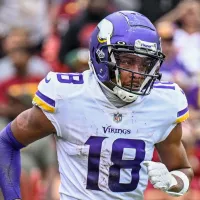
Justin Jefferson is a professional football wide receiver for the...
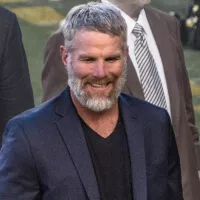
Brett Favre is a retired NFL quarterback renowned for his...
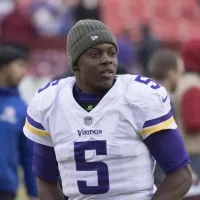
Teddy Bridgewater is a professional American football quarterback currently playing...
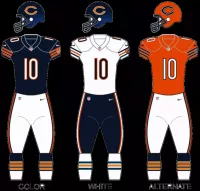
The Chicago Bears are a professional American football team based...
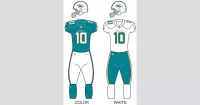
The Miami Dolphins are a professional American football team based...
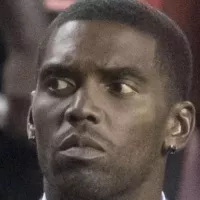
Randy Moss a former NFL wide receiver is considered one...
Trending

2 months ago Draymond Green confronts fan over Angel Reese taunts during Warriors-Pelicans game.

6 months ago Scarlett Johansson Kisses Jonathan Bailey at Premiere, Colin Jost Present.

Dame Emma Thompson is a highly acclaimed English actress and writer with a career spanning over years Her exceptional talent...
8 months ago Milan Defeats Bologna 3-1 with Gimenez's Brace and Pulisic's Goal in Serie A
Katherine Barrett Wilson is an American progressive activist community organizer and writer As the co-founder and executive director of the...

The iPhone e is an affordable smartphone in Apple's iPhone series part of the eighteenth-generation line-up Announced on February it...
Popular

Stranger Things created by the Duffer Brothers is a popular...

XXXTentacion born Jahseh Dwayne Ricardo Onfroy was a controversial yet...

Kelsey Grammer is an accomplished American actor producer and singer...

Candace Owens is an American conservative political commentator and author...
Turning Point USA TPUSA is an American nonprofit organization founded...

Bernie Sanders is a prominent American politician currently serving as...
